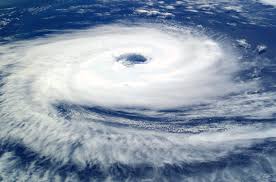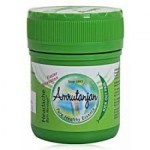Naming Process for Hurricane, Cyclone and Typhoon
Cyclone or tropical cyclone is a storm or a strong wind that rotates around a low pressure center. It originates in a sea and often travels to the land. A cyclone initiates as small area of low pressure over an ocean. The cyclone can be envisaged as a huge wheel that derives power from warm, moist air as fuel. Massive cyclones are often accompanied by heavy rain.
Hurricane, cyclone and typhoon- Anything in common?
Tropical cyclone is a common name to represent different types of powerful storms. Whether a storm is a hurricane, cyclone or typhoon depends on the location of the origination of the storm. A storm is termed hurricane if it originates in the Atlantic Ocean or Northeast Pacific. The exact type of storm that originates in the North Pacific is a typhoon while it becomes a cyclone if the origination is South Pacific or Indian Ocean.
Florence, Nilofar, Ockhi – Anything special about the beautiful names?
All are beautiful names, but not for those who had to experienced them. They are in fact names of various cyclones/hurricanes/typhoons that affected various parts of the world. There are many more like, Chris, Debby, Aletta, Carlotta, Gilma, Ileana, Ema, Hene, Damrey, Kirogi, Betty, Caloy, Agni, Bijli, Buri, Dodo and so on. Some have already occurred, while the remaining may occur in future. Helen, Florence , Gordon and Isaac are names for the hurricanes that originate in the Atlantic Ocean. Miriam, Norman, Olivia and Rosa are names for Northeast Pacific hurricanes.
The names to tropical and subtropical cyclones are often provided by various countries. Earlier, the cyclones were not named and were represented by a storm number or its longitude and latitude. Later on, name was identified as easier option to mention, avoid confusion and also to track if multiple storms are occurring simultaneously.
The list of names of cyclones is maintained by the World Meteorological Organization. The names to the list can be suggested by member countries. A storm is assigned with a name from the lists once the sustained wind speed crosses 65 km/h (40 mph). Names are given to tropical storms and they retain the name on developing into a cyclone/hurricane/typhoon. This criterion may vary slightly from basin to basin.
How did the practice of naming cyclones started?
Initially the storms were known after objects, places or the name of the saint whose feast day fell on the date of occurrence. The usage of personal naming is generally credited to Clement Wragge, a Queensland Government Meteorologist. Gradually, naming schemes and maintaining naming list for cyclones and hurricanes evolved. After World War II, forecasters and meteorologists started using female names to mention the storms. In 1953, the US weather service approved the idea and created a list with women's names from A to W (excluding Q). Later on in 1978, male names also started to be included in the list due to protest from women's liberation bodies. Presently, cyclone/ hurricane/ typhoon name lists are maintained for Eastern, Central, Western and Southern Pacific basins, Atlantic Ocean, the Australian region and Indian Ocean.
Any member of WMO (World Meteorological Organization) can demand to treat a name retired or withdrawn, if the storm has caused large destruction or number of deaths. A replacement name can then be given which is voted upon for acceptance.
How are the cyclones in Indian Ocean named?
For the Indian Ocean region, eight countries – Bangladesh, India, Maldives, Myanmar, Oman, Pakistan, Sri Lanka and Thailand – have suggested a set of names which are allocated serially whenever a cyclonic storm develops. Onil, Giri, Nisha, Ockhi are some of names suggested by Bangladesh. Agni, Akash, Jal, Lehar and Megh are names for cyclones suggested by India. Aila, Kella and Madi are suggested by Maldives while names Bulbul, Titli, Nilofar, Laila are some of those contributed by Pakistan. Phailin, Komen. Mora and and Amphan are suggested by Thailand. The list is not exhaustive, but only an indication of the names suggested by various countries.









